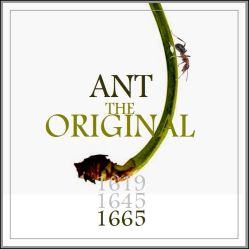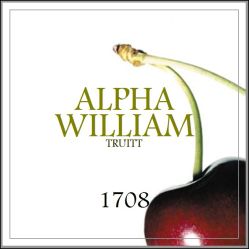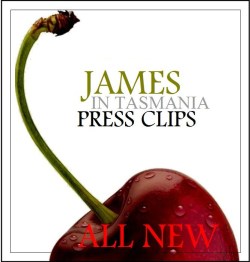BRAMHAM

A GRAB-BAG TILL I GET A CHANCE TO SORT IT
WIKIPEDIA / GENUKI / asst. GOOGLE mash-up
Bramham is at the crossroads of the east-west Roman road from York through Tadcaster to Ilkley and the north-south Great North Road, now the A1 road, giving it a history that goes back to the Romans.
|
Bramham in the eighteenth and nineteenth centuries |
| During this period large landowners consolidated their hold on the village and its surrounding parish. The rise of the Benson family, subsequently Fox and Lane Fox from William and Mary’s time in the early eighteenth century, has been well chronicled. Their acquisition of a large part of the parish land and their building of Bramham park, brought, through their continuous ownership‑ a stability to the area which lasts until the present day. The passing down, in large blocks of land, from earlier to later landlords, and their enclosure of the open fields, allowed by private Acts of Parliament during the time of George II (160‑1810), enabled the parish to retain an agricultural unity unspoilt by urban development. The rural nature of Bramham and its surroundings has been protected by the ownership of much of its acres by the Headley and Lane Fox families, and latterly in the eastern part, by John Smith’s Brewer; and the University of Leeds for its Department of Agriculture. |
Though the road network has continued to develop, notably with the growing importance of the A1, Bramham avoided the organisation of the railways. Thus, to the individual inconvenience of the villagers, the nearest railway stations lay at Newton Kyme (for York), Thorner (for Leeds) and Thorp Arch (for Wetherby), all on the York‑Wetherby‑Leeds line of the North Eastern Railways.
The Grand Houses of Bramham
Bramham Park,
whose history has been chronicled elsewhere was built in the period 1700‑1710 by Robert Benson, first Lord Bingley. whose father had keen granted the extensive lands by William and Mary for eminent public service. During and after Queen Anne’s reign, much of the Moor was enclosed and cultivated into delightful park land and prosperous tenanted farms. The original house was badly gutted by fire in 1828, and not restored until 1906‑14, when the rebuilding was carried out using stone from Bramham College.Bowcliffe Hall,
begun in 1805 by William Robinson, a Manchester cotton magnate, and sold soon afterwards, on his bankruptcy, for £2,000 at public auction. The house was completed around 1825 for John Smyth, before becoming the residence of the Lane Fox family during the period 1828‑1906, after the disastrous fire at Bramham Park. Subsequently it was owned by Mr W G Jackson from 1908 and Mr Robert Blackburn, the early aviation pioneer and manufacturer, from 1920 until 1935. He was chairman of Blackburn Aircraft Ltd, and founder of the flag school at Brough for the training of officers of the Air Reserve. In 1912 he built a single neater twin engined plane. He was also the owner of a plane which won the “War of the Air Trophy” presented by the Yorkshire Evening Post. The fuel companies Hargreaves and then Bayfords have used the house as offices since 1956. Hope Hall,
at one time a home of Sir Thomas Fairfax. of Civil War fame, in the 1640’s this was owned by the Reverend J Troutbeck and much later by the Postmaster of Tadcaster, Mr Marshall. From 1852 it was the sporting seat of Viscount Nevill, though owned by the Bramham Park Estate. Latterly the Bramham Moor Hunt Kennels were installed, and the house turned into flats for estate personnel.
Beech House,
formerly Beech Grove, owned by Mr George Wright. Beech House, with its annexe. became the Estate Office of the Bramham Park Estate, under its clerk, Mr Benson. Here lived Mr Wagstaff, the General Foreman Mason, a verb‑ considerable man, brought from Birmingham to supervise the re‑building of the Park before its re‑opening in 1907.Bramham House;
was built by a Vicar of Bramham, Rev Robert Bownas, in 1806, and later bought by James Lane Fox for his son. George the Gambler, on his marriage. His son, George the Squire, sold it in 1856 (when he was trying to settle the debts his father had left) to J R Gregson Esq. It was then sold to a Captain Preston who in turn sold it to a Mr C S Robson at about the turn of this century: Just before 1914 it was sold to Major Ingham and later to G T Ramsden of Ramsden’s Brewery. In 1947/8 it was sold to the West Riding Council who used it as a Children’s Home until it was closed in the late 1980’s.
Bramham Grange;
nestling beneath the A1 by‑pass on Tenter Hill, the Grange was a house of very considerable proportions lived in by various members of the gentry, and owned by the Bramham Park Estate who split it into its present three dwellings.The Manor House, at the top of High Street, was built in the early nineteenth century as a farmhouse. It is said to have a secret passageway running down to the church. ‘this is one of Bramham’s two haunted houses! In living memory W Hick Thackwray, a mineral water manufacturer, lived there, but, on his death, the house was bought by Bramham Park Estate, and converted into two dwellings.
Wothersome Grange.
On the site of an ancient Anglo Saxon settlement to the west of the village, `Squire George’ Lane Fox built one of four identical houses for his children during the second half of the nineteenth century. The other three houses lie at Terry Lug (at the northern entrance to the Estate), Clifford Moor (on the A1 about half a mile north of the village) and between Walton and Wighill.
Bramham Lodge,
an early nineteenth century house, originally part of the Headley Estate, was lived in by a Mr Bigland, then the Wright family, and then J H Whittaker. Bramham Park Estate bought it and it was lived in by Mr Edmund Harrison, their steward. It became the home of Major Lipscombe, who was Estate Manager to the Lane Fox family, before going into private ownership in the late 1960’s.
Tenter Hill Lodge, now Carlton House
In early Victorian times Miss Mary Ann Bownas, daughter of former Vicar Robert Bownas, ran a College for Young Ladies in this house.
Prospect House, on High Street, has records which show its owners since 1812. A cottage at the back was at some stage incorporated into the house. In recent times Mr Kendrew ran a local business from the house during the Second World War; his sister was known to kill pigs in the cellars!
Bramham Old Hall
The Old Vicarage
dates from 1678, its grounds stretching round half the churchyard. Originally considerably larger even than today, it was partly demolished for practical purposes. During the 1960’s a new vicarage was built in the grounds, with the older building sold into private hands. Earlier a “Village Institute”, now a private bungalow near the Village Hall, was built in the original Vicarage grounds by a former Vicar’s wife, Mrs Wadeson, to enable villagers to have a bath there for a few pence.
Bramham Old Hall.
The Old Hall is one of the oldest houses in the area, whose central part is thought to date from the Stuart period. (The date 1681 appears over a door lintel.) The inclusion of the Old in its name came about to avoid confusion with Bramham Hall, the name given to Bowcliffe Hall by the Lane Fox family during their residence there. The Old Hall has had a number of extensions, one wing certainly being Victorian. Probably the home of the early Lords of the Manor, the house has a cobbled courtyard which is thought to have been the marching square where the Lord of the Manor exercised his own small body of armed men. In late Victorian times, the then owner, the Rt Hon John Lloyd Wharton, MP for Ripon, gave the Church Lychgate in memory of his wife. Later, Mr Hardcastle was well known for the collection of clocks he kept there. More recent residents have been Mr & Mrs Bowman, Col and Mrs Whittingham, and Mr Tony Clegg and his family. An interesting feature is the garden folly, with flagstaff; this building, which appears to be a ruined medieval tower, is in fact of later nineteenth century construction, containing a three water earth closet, the third at child’s level.
Oglethorpe Hall;
now only visible in an old archway close to more modern farm buildings, this was the seat of an ancient family which flourished from before the Norman Conquest until the time of Cromwell, well over 600 years. The parish’s full name, Bramham‑cum‑Oglethorpe testifies to their importance. At the time of the Conquest the Oglethorpe of the day held the prestigious position of Reeve (Steward or Magistrate)of the County. A descendant, Owen Oglethorpe, Bishop of Carlisle, born at Oglethorpe Hall, was present at the burning of Latimer and Ridley, survived the turbulance of Henry VIII’s reign, and crowned the first Queen Elizabeth on 15 January, 1559. He is buried at St Dunstan’s in Fleet Street, London. Queen Elizabeth visited Oglethorpe in 1572; her signature is on an old commentary held at Newton Kyme Rectory. It was Bishop Oglethorpe who founded Tadcaster Grammar School in 1556. Eventually the family’s royal connections told against it, when Cromwell’s Parliament confiscated all its estates, giving them to the Fairfax family. Much later they were sold to Lord Bingley
Headley Hall;
originally built by Bishop Oglethorpe during the sixteenth century, Headley Hall came into the hands of the Winn family, one of whom was raised in 1797 to an Irish peerage as Lord Headley, Baron Allanson and Winn. The house and lands continued in private ownership until 1903 when they were bought by the Bramham Park Estates. They in turn leased, in the late 1940’s, and later sold them to the University of Leeds as the farm for its Department of Agriculture.
The Biggin.
Having been in medieval times the site of the Nostell Priory monks’ cell, the Biggin housed members of a variety of famous families ‑ D’Arcy, Gascoigne, Fairfax, Goodricke ‑ but notably became the home of Charles Allanson, MP for Ripon. In turn he was succeeded by his relatives the Winn family, one of whom, Sir George Winn, became Lord Headley in 1797. Mr Henry Ramsden lived there in the 1840’s. In the mid‑nineteenth century the Biggin was leased and much‑extended as Bramham College. After the college closed with the college buildings dismantled the Biggin reverted to being a house and yet remained within the Bramham Park Estate, lived in by Mr Duncalfe, and the Hon Christopher York before the Second World War. During the war a Miss Brown ran a nursery school there and it was used for a time to house evacuees. Following the war Col and Mrs Lane Fox, Mr and Mrs Oliver, Mr and Mrs Fawcett have lived there. It is still leased by Bramham Park Estate.
Anglian (English) place name elements ham, inga and ingahamare often closely related those of Roman sites and Roman roads. Running north south and following approximately, the magnesium limestone belt, a line of ingaham (Collingham “homestead of Cola’s folk”) and ham (Bramham “homestead amongst the broom”) names can be identified, which also coincide with the distribution of seventh century burials.
Bramham is recorded in the Domesday Book as the Manor of Bramham and the Holder in 1066 was Ligulfr. The amount of land to be taxed (geld) was 12 carucates and there were eight ploughs in the village. By 1086, Bramham was held by Nigel from Count Robert of Mortain and Demesne ploughs (for lord’s needs) were three. There were 15 villeins or tenant farmers holding a total of 5.5 ploughs between them. An estimate of the total population of Bramham in 1086 was 68. Bramham’s value in 1066 was 160 shillings but only 50 shillings in 1086 after the harrying of the north, indicating quite a severe levels of destruction. Bramham was a mill site in 1086. In comparison Wetherby had a population of 41 and was valued at only 20 shillings in both 1066 and 1086.
The oldest part of All Saints Parish Church in Bramham was built in about 1150 by the Normans. The church consists of nave, aisles, and chancel, with tower and short spire; and has a fine pointed doorway. The churchyard is oval in shape and therefore Saxon in origin.
Older residences in the centre of the village are constructed of magnesium limestone quarried in the parish. Stone from Bramham was used for the pendants and hanging ornaments on the vaults and ceilings of York Minster, and in records of the building of the Minster, Bramham stone is specially referred to as being used for this purpose. The Bramham limestone was transported to York by water from Tadcaster or Cawood.
There is a memorial stone marking where the Earl of Northumberland fell and was killed at Blackfen Wood, Bramham, but the stone was moved from the actual site of the battle some years ago. A plaque erected to denote the significance of the stone has been vandalised and nowadays is difficult to find or decipher. In 2008, to commemorate the 600th anniversary of the battle, an information board and a two-sided limestone memorial stone bearing “Bramham” and “Site of Battle” signs was erected on Paradise Way, the new local access road, which crosses the ancient battlefield.
It is known that English Civil War soldiers who died during the Battle of Marston Moor in 1644, a few miles to the north-east, are buried in the churchyard at Bramham. Records show that three soldiers rest there: Samuell Allan, Robert Johnson and Thomas Mirole. Prior to the battle, Cromwell is reputed to have trained his Ironsides on Bramham Moor, and to have recruited local young farmers whose riding skills made them ideal cavalry soldiers.
By 1686, Bramham was an important staging post on the London – Edinburgh coaching route and surprisingly had a population of 291, which was higher than that of Wetherby at only 279. In 1801, the population of Bramham was around 800, reaching 1,300 by 1861. However, a significant decline led to the population falling back to 950 in 1901. The population has gradually been increasing since then, although the 1861 peak was only overtaken in 1981. By 2001, the village had a population of about 1,750, about a quarter of whom were under the age of 19 and well over half (62%) were under the age of 44, making it a village of young people. There were 674 households, a growth of 20% on the 1991 census.
*
Arthur Mee’s “The King’s England: Yorkshire West Riding” first printed in 1941 describes Bramham as follows:
The Great North Road and a stream flowing to the River Wharfe are crossed by one of many Roman roads hereabouts. It has a fine bridge, an imposing peace memorial, an old windmill looking down,and houses great and small in a lovely green setting. South of the village, where the hillside road is bowered with stately beeches, are four fine houses not far apart; Bramham House, Bramham Lodge, Bramham Biggin (which began as a chantry to Nostell Priory),and Bramham Hall, a house in classic style with an entrance crowned by a pediment on six pillars. Shading its beautiful gardens are cedars, beeches, chestnuts, and ancient yews; and a great whitebeam here is said to be the biggest in England. Off the Roman road running through rich woodland west of the village is Hope Hall, where Sir Thomas Fairfax lived; it was the kennels of the Bramham Moor Hunt when we called.*For many years, the village had a rural emphasis although as the Great North Road grew in importance, the number of coaching inns and stables increased to service the passing trade. Over the years, a significant amount of employment has been provided by the local estates, particularly Bramham Park and the other grand houses in the village.The Bramham Moor HuntT
he Bramham Moor Hunt was first founded in the 1740s by George Fox Lane, the son-in-law of Robert Benson, 1st Baron Bingley (1676-1731) who had built Bramham Park in the late 17th century. George Fox Lane was Member of Parliament for York from 1742 to 1761 and was created Lord Bingley in 1762. His only son Robert Fox Lane pre-deceased his parents and eventually in 1792, the Bramham Park estate came to James Fox (1758-1821), the nephew of George Fox Lane. James “Jemmy” Fox was a scholar, a raconteur and, for a time, Member of Parliament for Horsham. He was also a keen horseman and devoted himself to the estate and organised the Bramham Moor Hunt on regular lines, collecting the hounds into a pack and hunting on set days over recognised hunting country. The famous hunting man’s toast: “The Bramham Moor and five-and-twenty couple” was initiated by “Jemmy” Fox. Another of his ideas was the reversing the Fox Lane name he had adopted to Lane Fox.In 2002, the Bramham Moor Hunt merged with the Badsworth Hunt to become the Badsworth and Bramham Moor Hunt. The Bramham fox hounds, which, for many years, had been kennelled at Hope Hall, Bramham moved to Thorpe Audlin, near Pontefract. The Badsworth and Bramham Moor Hunt has a large following of supporters and is active in the areas that the two separate hunts covered previously.










Leave a comment